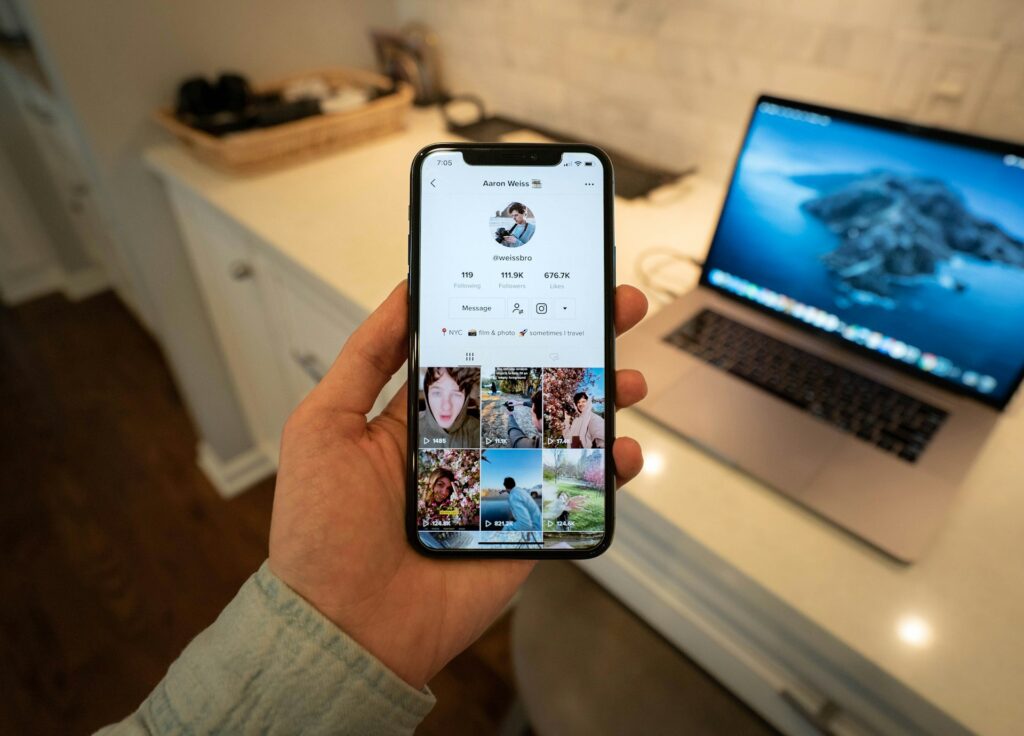
During the late hours of the night, 29-year-old Isabella Grace often finds herself crafting private TikTok videos immersed in “manifestation sounds.” These videos stay confined to her phone, as she wishes she could avoid making them. However, the persistent grip of obsessive-compulsive disorder (OCD), which has been a part of her life for the past ten years, compels her to engage in this ritual. OCD, a mentally taxing condition, encompasses misunderstood obsessions and compulsions, both external (such as repeating a task a specific number of times) and internal (battling intrusive thoughts).
The anxiety stemming from OCD makes individuals feel that unless they succumb to their compulsions, something unbearable will occur. In Isabella’s case, these TikTok audio rituals burden her with a sense of responsibility for the well-being of her loved ones.
Isabella is among many individuals with OCD who assert that the surge in “manifestation sounds” and “claim sounds” on TikTok is wreaking havoc on their daily lives. These videos unintentionally emulate the concept of chain mail, spanning various popular audio tracks, with one garnering over 700,000 videos and the hashtag #claim accumulating over 15 billion views. Unlike the chain mail of the past, these videos don’t narrate ghost stories or promote financial schemes; instead, they instruct viewers to use a specific audio or interact with the video to avert potential misfortunes. What initially began as a way to spread good luck has evolved into threats involving pet fatalities or car accidents.

“I have numerous videos in my drafts with these sounds,” discloses 26-year-old Madison, echoing the sentiments of many. Madison’s OCD prompts her to list three positive aspects of her surroundings while driving to assuage anxieties about potential accidents. She resorts to manifestation sounds whenever she encounters them, even amidst work or school obligations. The stress induced by these claim sounds has become a recurring topic in Madison’s therapy sessions. “I don’t want to abandon my tasks to create a brief video, but the anxiety it brings is overwhelming. A significant part of my OCD revolves around the belief that my thoughts have magical manifesting powers, and anything negative I think will come true.”
Madison’s “magical manifesting powers” align with what medical professionals term magical thinking—a facet of OCD where individuals attempt to counter intrusive thoughts with unrelated compulsions. While these compulsions offer temporary relief, they ultimately exacerbate symptoms and fears in the long run. Manifestation videos present intrusive thoughts packaged with a healing compulsion, serving them on a silver platter.

Chain mail has existed for decades, but the algorithmic sophistication of TikTok adds a new dimension. Users find themselves ensnared in a cycle where interacting with videos to alleviate their concerns inadvertently signals TikTok to provide more similar content.
I don’t want to abandon my tasks to create a brief video, but the anxiety it brings is overwhelming. A significant part of my OCD revolves around the belief that my thoughts have magical manifesting powers, and anything negative I think will come true.
Madison, 26
These sounds masquerade as manifestations, a concept that has surged in popularity, thanks in large part to TikTok. While the idea that thoughts can shape reality might be challenging for some with OCD, manifestation typically extends an open invitation to users, adopting a nonchalant attitude toward non-participants—distinct from the ominous threats posed by claim sounds.
“I worry about people with OCD who are struggling more than I am, who encounter that stuff,” reflects Madison. “I just don’t want it to worsen their lives.” Both traditional chain mail and contemporary manifestation sounds prey on inherent human anxieties about luck, health, and relationships, offering a semblance of control over an uncertain future—a need that tends to intensify during times of uncertainty.
“There’s a sense of urgency; it feels very life or death. Even individuals without OCD can relate to that alarming feeling,” notes Chloe Thompson, a mental health advocate with personal experience in OCD. Chloe explains that her earliest memory of gaining control over an irrational fear involved avoiding showers after receiving a chain mail about a girl being harmed in one.
Psychologist Dr. Nora Harper suggests that while a video alone is unlikely to cause OCD, it might serve as a trigger for those unaware of their condition, especially among younger individuals in crucial stages of developing reasoning and critical thinking skills. “Repeatedly consuming content like the TikTok video trend could foster irrational fears,” she cautions.
“I don’t believe anyone is doing it with malicious intent,” states Madison, highlighting the lack of awareness about the less glamorous aspects of OCD. Despite an estimated 1.2% of both the UK and US populations grappling with OCD, the disorder remains widely misrepresented, often reduced to stereotypical images like Monica Geller’s tidiness or Khloe Kardashian’s “KhlO-C-D” arrangement of Oreos.
For Madison, there was a time when discussing intrusive thoughts was challenging. “I only recently started talking to my therapist about [my intrusive thoughts],” she reveals. “With depression or anxiety, those thoughts can be easier to share because people can understand feeling sad or nervous. But with OCD, it introduces these disturbing, violent thoughts that you internalize and wonder if you’re a terrible person.”
In Isabella’s view, the creator of the secretive TikTok videos, while she doesn’t expect social media to cater to her specific OCD triggers, these manifestation sounds feel particularly predatory.
It’s not that the world should revolve around me, as accommodating every mental health trigger would be impractical. Everyone has triggers. But these seem particularly predatory without any apparent reason. The core issue is that it preys on my actions correlating to something happening.
Isabella, 29
Anna Walker, a PhD researcher specializing in politics, mental health, and social media at the University of York, emphasizes the need to view social media as a public space and to be mindful of one’s actions. “We’re beyond thinking of the offline and online as separate. Everyone agrees that you cannot separate the two,” she states. Essentially, if you wouldn’t tell a stranger on the bus that their mother will perish, refrain from doing so on TikTok.
While Anna acknowledges the role of tech companies in addressing damaging content, manifestation sounds pose a unique challenge by flying under the radar. “Deciphering this content is challenging. It can camouflage itself within broader manifestation content because recognizing potentially harmful words is difficult,” she explains.
Chloe employs the videos as a form of exposure therapy, practicing non-engagement responses to strip the compulsion of its power. “I leave it up in the air,” she asserts. “Something bad might happen, and that would be unfortunate, but I won’t engage in this behavior. These thoughts can be scary, but ultimately, it’s better not to fight them or engage in compulsive behaviors.”
Dr. Harper concedes that limiting exposure to manifestation sounds can be challenging, but she recommends making use of available features on TikTok, such as expressing disinterest or blocking specific content and creators. Seeking support from a therapist and employing existing coping mechanisms are also crucial. Madison, for instance, tells trusted friends and family about the videos when they come up and how they’re making her feel in that moment.





